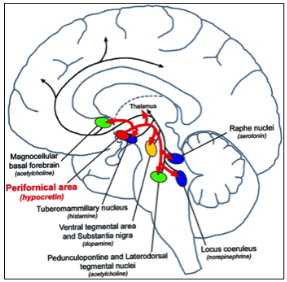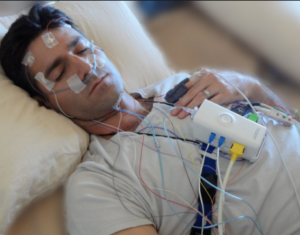Narcolepsy is a neurological disorder that affects the control of the sleep-wake cycle in a person. People with narcolepsy often find difficult to stay awake for a more extended period. They tend to experience excessive sleepiness during daytime regardless of circumstances. In a healthy sleep cycle, we initially enter the early stages of sleep which are followed by deeper stages, i.e., Nonrapid Eye Movement (NREM) and ultimately (after about 90 minutes) rapid eye movement (REM) sleep. So people suffering from narcolepsy, REM sleep almost occurs immediately.
Prevalence:
Narcolepsy occurs equally in men and women. It is estimated to affect nearly 1 in 2000 people.
Onset:
The symptoms appear in childhood or adolescence (15-25 years of age), but it can happen at any age. Many people have symptoms of narcolepsy for years before getting a proper diagnosis.
Cause:
It is due to the deficiency in the production of a chemical called hypocretin in the brain which regulates the sleep-wake cycle. A cluster of cells produces hypocretin in the hypothalamus which when damaged stopped producing hypocretin.

Symptoms:
They are mainly called narcoleptic tetrad –
1.Excessive daytime sleepiness (EDS): People with EDS shows mental cloudiness, lack of energy and concentration, memory lapses, a depressed mood, exhaustion.
2.Cataplexy: It is the muscle paralysis of REM sleep occurring during waking hours. It causes sudden loss of muscle tone that leads to a slack jaw, or weakness of the arms, legs, or trunk.
3.Hallucinations
4.Sleep paralysis
Diagnosis:
Narcolepsy is diagnosed by a physical exam, taking a medical history, as well as conducting a sleep test. Two tests that are considered essential in confirming a diagnosis of narcolepsy are the Polysomnogram (PSG) and the Multiple Sleep Latency Test (MSLT).

Treatment:
There is no cure for narcolepsy but certain lifestyle adjustments such as avoiding caffeine, alcohol, nicotine, and heavy meals, regulating sleep schedules, scheduling daytime naps (10-15 minutes in length), and establishing a regular exercise and meal schedule will help to reduce symptoms. There is a drug called Xyrem, allows people with narcolepsy to get a better night’s sleep, allowing them to be less sleepy during the day.


